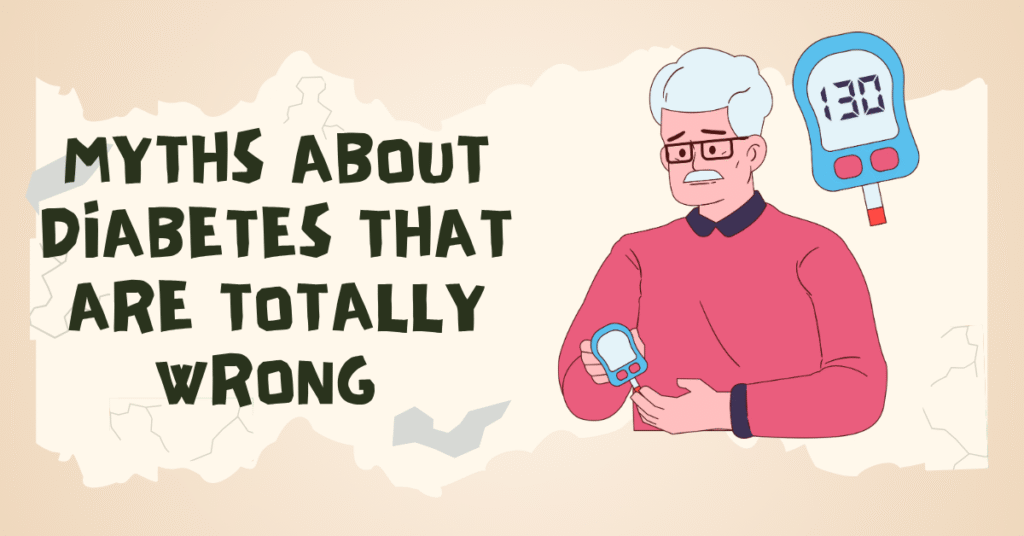Diabetes is a chronic condition that affects how your body processes blood sugar (glucose). It happens when the body either doesn’t produce enough insulin or doesn’t use it effectively. This leads to high blood sugar levels, which can cause various health problems over time. Diabetes is a growing concern worldwide, with millions affected, making it important to understand the disease and its implications.
What Happens in the Body When You Have Diabetes?
When you have diabetes, your body struggles to regulate blood sugar levels. Insulin, a hormone produced by the pancreas, helps move glucose from the blood into the cells for energy. In diabetes, the body either doesn’t produce enough insulin (Type 1) or doesn’t use insulin effectively (Type 2). As a result, blood sugar levels remain high, which can lead to long-term complications such as heart disease, kidney damage, and nerve issues if left unmanaged.
Types of Diabetes
There are three main types of diabetes, each with its causes and characteristics:
- Type 1 Diabetes is an autoimmune condition in which the body attacks and destroys the cells in the pancreas that produce insulin, leading to little or no insulin in the body. It usually develops in childhood or early adulthood.
- Type 2 Diabetes: The most common form of diabetes, where the body becomes resistant to insulin, or doesn’t produce enough. It’s often linked to poor lifestyle choices and can develop at any age.
- Gestational Diabetes: This type occurs during pregnancy and typically goes away after childbirth, but it increases the risk of developing Type 2 diabetes later in life.

Symptoms of Diabetes
- Excessive thirst: Feeling unusually thirsty and dehydrated.
- Frequent urination: Going to the bathroom more often than usual.
- Fatigue: Feeling unusually tired or weak.
- Blurred vision: Vision changes due to high blood sugar levels.
Risk Factors for Diabetes
Several factors can increase your risk of developing diabetes, including:
- Genetics: Family history is significant, especially for Type 1 and Type 2 diabetes.
- Age: The risk increases as you get older, particularly after 45.
- Lifestyle: Poor diet, lack of exercise, and being overweight are major contributors to Type 2 diabetes.
- Other conditions: High blood pressure and high cholesterol can also raise the risk.
Read more: Best Pranayama and Yoga Asanas for Diabetes Management
Prevention and Management
Preventing or managing diabetes involves:
- Healthy diet: Focus on a balanced diet rich in fruits, vegetables, and whole grains.
- Regular exercise: Staying active helps the body use insulin more effectively.
- Weight management: Maintaining a healthy weight can prevent Type 2 diabetes and help manage it.
- Monitoring blood sugar levels: Regular check-ups can help detect and manage diabetes early.
- Medications: For those who need it, medications can help control blood sugar levels.
Adopting these habits can significantly reduce the risk of diabetes.
Final words
Understanding what diabetes is, its symptoms, and risk factors is crucial for early detection and management. By making healthier lifestyle choices like eating well, staying active, and monitoring your health, you can significantly reduce the risk of developing diabetes. If you’re at risk or already diagnosed, seeking professional help and guidance is essential to maintain a good quality of life.
What is diabetes in simple words?
Diabetes is a condition where the body cannot control blood sugar properly due to problems with insulin.
What are the early signs of diabetes?
Common early signs include frequent urination, extreme thirst, fatigue, and unexplained weight loss.
Is Type 2 diabetes preventable?
Yes, in many cases it can be prevented through healthy eating, regular exercise, and weight control.
Who is most at risk of getting diabetes?
People with a family history, poor diet, sedentary lifestyle, obesity, or those above 45 years of age are at higher risk.




